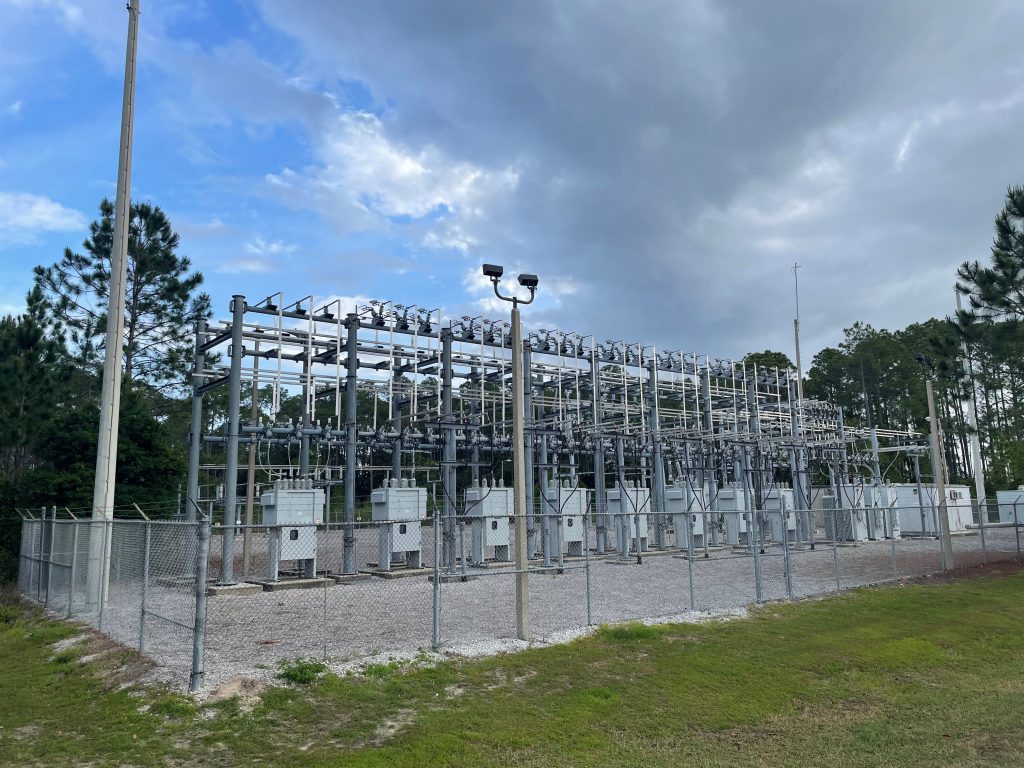By Capt. Dylan Bechen, USAF, Capt. Gregory Howland, USAF, Capt. Zachary Moer, M.SAME, USAF, and Christopher Chini, Ph.D.
A warming climate, and the number of extreme weather events caused by it, poses significant societal threats, especially for the large proportions of the population that live near coastlines.
Projections indicate that adverse impacts from extreme weather, such as higher-intensity tropical storms, increased rainfall, and rising sea levels, will continue to form complex challenges for coastal communities and infrastructure systems. This directly impacts the U.S. military as well, with its high number of bases and training areas located in these danger-prone areas.
As laid out in the 2019 Report on Effects of a Changing Climate, issued by the Department of Defense (DOD), and the 2019 Inspector General’s Audit on the DOD’s Preparation for Natural Disasters, these risks and their corresponding influence on installation planning are well recognized.
The U.S. Air Force maintains 17 coastal bases, many of which have recently experienced severe climate events, such as Tyndall AFB, Fla., and Joint Base Langley-Eustis, Va. As climate hazards intensify, research and intervention methods must be explored to protect life, infrastructure, and mission sets.
A research study carried out at the Air Force Institute of Technology focused on the effects of storm surges and tidal flooding to electric infrastructure on coastal installations.

MEASURING VULNERABILITY
Climate change poses multiple threats to coastal power systems. Flooding is the most devastating and recurring concern. Sea level rise, globally, is projected to be 0.5-m to 2-m (about 1.5-ft to 6.5-ft) by 2100, but it does have variations locally. Additionally, warmer sea surface temperatures will have the potential to cause the average storm intensity to increase. The combination of sea level rise and more intense storms will likely result in more significant coastal flooding events in the future. And this all jeopardizes electrical components and subsystems across the electrical network. Power plants, transmission lines, and substations are at risk of flooding, which poses a serious impact to the system functionality and operability of installations.
At-Risk Locations. Sea level rise projections offer civil planners a means to assess future infrastructure impacts. For instance, geographic information systems can support infrastructure decisions by identifying the regions and infrastructure at risk to future conditions.
For the study conducted by the Air Force Institute of Technology, the team compared municipal electrical system geospatial data and the National Oceanic & Atmospheric Administration’s sea level rise projections to identify flood risk exposure at various water levels. The research evaluated transmission line, substation, and power plant susceptibility to sea level rise and probable impact on installations in Florida (Hurlburt Field/Eglin AFB, Tyndall AFB, MacDill AFB, Cape Canaveral, and Patrick AFB).
Levels of Concern. Geospatial analysis within a 40-km (25-mi) buffer of these bases reveals significant disruptions to the power grid at different sea level rise scenarios. These results suggest that a 3-ft sea level rise scenario marginally impacts the interest areas, with 30 percent of transmission lines, 1 percent of substations, and 3 percent of power plants affected. Even so, transmission line inundation may require no mitigation since most of these lines are above ground and flood concerns are typically limited to transmission line towers.
However, 6-ft of sea level rise influences the electrical infrastructure resilience of the installations and the supporting communities significantly more—impacting 36 percent of transmission lines, 8 percent of substations, and 15 percent of power plants. Finally, a 10-ft sea level rise scenario, which emulates a 4-ft storm surge within the 6-ft sea level rise projection, is even more unfavorable. It would impact 45 percent of transmission lines, 17 percent of substations, and 33 percent of power plants within a 25-mi radius of all Air Force installations in Florida.
MITIGATION STRATEGIES
An electrical system is one of the most critical networks on an installation. Failure can cause immediate impacts to a number of base missions. Commanders recognize the significance of electrical infrastructure to overall mission effectiveness. Resilience measures and climate change adaptations are essential to the Air Force’s ability to succeed in any future conflict.
A number of mitigation strategies can be implemented to address weather-driven threats to electricity infrastructure. However, their efficacy fluctuates based on plan complexity and cost.
A matrix-based approach for categorizing electrical grid adaptations could be useful for installation planners. This would allow more specific tailoring as they evaluate the base and the supporting community’s power system risk. Ideally, planners will seek out and act on solutions that expend minimal cost and effort while yielding the greatest resilience return on investment.
However, there are circumstances where logistics, politics, geospatial constraints, and other factors complicate electricity resilience action. These require more rigorous and costly solutions to be explored. The fundamental goal of a climate change policy is to balance the risk of climate change-related events against resource allocation. Finding compromise between preparing for the future and not over-allocating funds is essential because resources are limited—and devoting too many resources to uncertain future events can invite risk in other areas.
INFORMING DECISIONS
After the analysis of the Air Force’s Florida installations was conducted, three potential mitigation strategies to combat climate change impacts on electrical infrastructure are suggested.
Status Quo Plus: Stay within the current trajectory, but add leadership emphasis on power system resilience. This approach would have minimal changes from the norm and allow for project approvals to stay the same. Leadership emphasis often is difficult to garner and there will be additional priorities that likely will outweigh concerns that deal with unlikely or uncertain futures.
Score Boost: Implement a score boosting system that applies bonus points to projects that address installation power system resilience. This approach would have minimal changes to the current scoring guidelines, and there is already a precedent for this approach in energy savings projects. It is also likely to increase the funding for the grid specific upgrades. However, it is difficult to manage at scale, could increase the possibility of gaming the system, and could allow projects to potentially be boosted unnecessarily due to a small part.
Dedicated Funds: Create a separate pot of funds dedicated to climate-related energy grid upgrades. This strategy would guarantee a certain amount of funding for climate-related upgrades, which could be increased or decreased as needed for best effect and could be expanded for funding in other climate- related infrastructure sectors. Conversely, it would be difficult to create and maintain such returning funding.
Of the three mitigation strategies, the Score Boost is the easiest to execute and the easiest to garner leadership buy-in from. The other two options would place predominate burden on unit leadership or require extreme modifications to current business practice. Making any climate change adaptation policy is a challenging endeavor, and requires decisions based on uncertain data. By utilizing modern tools such as geospatial analysis, greater clarity can be gained on the future impacts of climate change on coastal installation electrical infrastructure. The end result: more informed decisions on mitigating the risks to these critical systems.
More News from TME
-

Developing a Maglev Network for National Defense
A transportation network leveraging superconducting magnetic levitation technologies would bring benefits for logistics, surface transportation, and energy storage, as well as strengthen national defense priorities and the defense industrial base. -

Meeting Training Needs with a One-of-a-Kind Diving Facility
In the planning process of a new Expeditionary Maritime Operations Center at Joint Expeditionary Base Little Creek-Fort Story, close collaboration and careful design was necessary to provide a path forward for a substantially deep training pool and meet the needs of advanced diving teams and other maritime operators. -

Delivering Successful Projects for USACE Far East District
Establishing a physical presence in Korea and collaborating with local contractors can assist U.S.-based firms in successfully delivering federal projects on the peninsula.